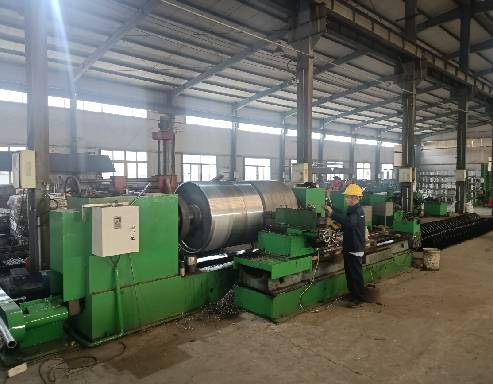 Afrikaans
Afrikaans  Albanian
Albanian  Amharic
Amharic  Arabic
Arabic  Armenian
Armenian  Azerbaijani
Azerbaijani  Basque
Basque  Belarusian
Belarusian  Bengali
Bengali  Bosnian
Bosnian  Bulgarian
Bulgarian  Catalan
Catalan  Cebuano
Cebuano  Corsican
Corsican  Croatian
Croatian  Czech
Czech  Danish
Danish  Dutch
Dutch  English
English  Esperanto
Esperanto  Estonian
Estonian  Finnish
Finnish  French
French  Frisian
Frisian  Galician
Galician  Georgian
Georgian  German
German  Greek
Greek  Gujarati
Gujarati  Haitian Creole
Haitian Creole  hausa
hausa  hawaiian
hawaiian  Hebrew
Hebrew  Hindi
Hindi  Miao
Miao  Hungarian
Hungarian  Icelandic
Icelandic  igbo
igbo  Indonesian
Indonesian  irish
irish  Italian
Italian  Japanese
Japanese  Javanese
Javanese  Kannada
Kannada  kazakh
kazakh  Khmer
Khmer  Rwandese
Rwandese  Korean
Korean  Kurdish
Kurdish  Kyrgyz
Kyrgyz  Lao
Lao  Latin
Latin  Latvian
Latvian  Lithuanian
Lithuanian  Luxembourgish
Luxembourgish  Macedonian
Macedonian  Malgashi
Malgashi  Malay
Malay  Malayalam
Malayalam  Maltese
Maltese  Maori
Maori  Marathi
Marathi  Mongolian
Mongolian  Myanmar
Myanmar  Nepali
Nepali  Norwegian
Norwegian  Norwegian
Norwegian  Occitan
Occitan  Pashto
Pashto  Persian
Persian  Polish
Polish  Portuguese
Portuguese  Punjabi
Punjabi  Romanian
Romanian  Russian
Russian  Samoan
Samoan  Scottish Gaelic
Scottish Gaelic  Serbian
Serbian  Sesotho
Sesotho  Shona
Shona  Sindhi
Sindhi  Sinhala
Sinhala  Slovak
Slovak  Slovenian
Slovenian  Somali
Somali  Spanish
Spanish  Sundanese
Sundanese  Swahili
Swahili  Swedish
Swedish  Tagalog
Tagalog  Tajik
Tajik  Tamil
Tamil  Tatar
Tatar  Telugu
Telugu  Thai
Thai  Turkish
Turkish  Turkmen
Turkmen  Ukrainian
Ukrainian  Urdu
Urdu  Uighur
Uighur  Uzbek
Uzbek  Vietnamese
Vietnamese  Welsh
Welsh  Bantu
Bantu  Yiddish
Yiddish  Yoruba
Yoruba  Zulu
Zulu belt drive with idler pulley
Belt Drive with Idler Pulley An Overview
In mechanical systems, the belt drive mechanism is an essential component that transmits power efficiently and effectively from one part of the machine to another. A belt drive system operates by using a flexible loop known as a belt, which moves over two or more pulleys. Among the various configurations, the inclusion of an idler pulley enhances the functionality of the belt drive in crucial ways.
Understanding Belt Drives
Belt drives are commonly used in various applications, ranging from simple machines to complex industrial setups. They consist of two or more pulleys connected by a belt, often made of rubber or other flexible materials. The primary purpose of a belt drive is to transfer motion and power between rotating shafts. Due to their design, belt drives can accommodate varying speeds, loads, and environmental conditions, making them versatile for different mechanical systems.
The Role of Idler Pulley
An idler pulley is an additional pulley introduced into the belt drive system that does not drive a load directly but instead serves to adjust the tension and alignment of the belt. The inclusion of idler pulleys offers several benefits
1. Tension Adjustment One of the primary functions of an idler pulley is to maintain proper tension in the belt. In many belt drive systems, the belt can stretch over time or due to operational conditions. An idler pulley helps ensure that the belt maintains adequate tension, reducing slip and improving power transmission efficiency.
belt drive with idler pulley

2. Belt Alignment Proper alignment of the belt is crucial for the efficient operation of any belt drive system. An idler pulley can guide the belt to keep it aligned with the driving and driven pulleys, minimizing lateral movement that could lead to wear or damage.
3. Routing Flexibility The addition of an idler pulley allows engineers to design more complex routing of the belt. This is especially useful in constrained spaces or in applications requiring a change in the belt's direction. By strategically placing idler pulleys, the design can eliminate sharp bends and ensure smoother operation.
4. Noise and Vibration Reduction Idler pulleys can also contribute to the overall noise and vibration damping within the system. By providing an additional support point for the belt, they can help absorb some of the vibrations produced during operation, leading to quieter machinery and reduced wear on components.
Applications and Use Cases
The use of idler pulleys in belt drive systems spans numerous industries. For example, in automotive applications, belt drives are used to power various engine components, such as the alternator and water pump. Idler pulleys play a vital role in these systems by ensuring smooth operation and reliable power transmission. In industrial machinery, conveyors frequently use belt drives with idler pulleys to transport materials, reduce operational noise, and enhance the lifespan of the belts.
Conclusion
In summary, belt drives with idler pulleys represent a crucial technology in mechanical systems. The idler pulley enhances the performance of the belt drive by maintaining proper tension, ensuring alignment, providing routing flexibility, and reducing noise and vibration. As industries continue to evolve, the importance of efficient power transmission systems will only increase, solidifying the role of belt drives and idler pulleys in driving innovation and operational effectiveness. Understanding and optimizing these components can lead to improved machinery performance, cost savings, and overall reliability in various applications.
-
Revolutionizing Conveyor Reliability with Advanced Rubber Lagging PulleysNewsJul.22,2025
-
Powering Precision and Durability with Expert Manufacturers of Conveyor ComponentsNewsJul.22,2025
-
Optimizing Conveyor Systems with Advanced Conveyor AccessoriesNewsJul.22,2025
-
Maximize Conveyor Efficiency with Quality Conveyor Idler PulleysNewsJul.22,2025
-
Future-Proof Your Conveyor System with High-Performance Polyurethane RollerNewsJul.22,2025
-
Driving Efficiency Forward with Quality Idlers and RollersNewsJul.22,2025





























